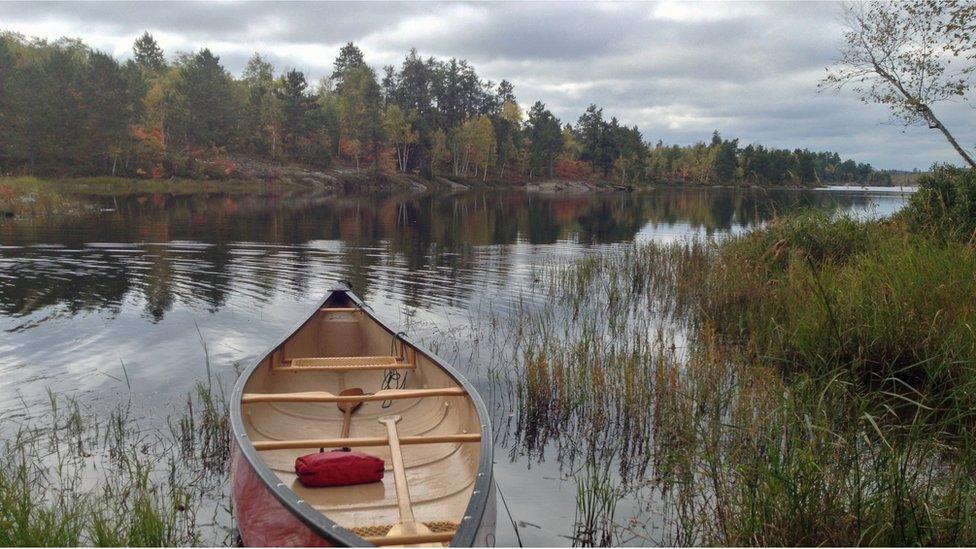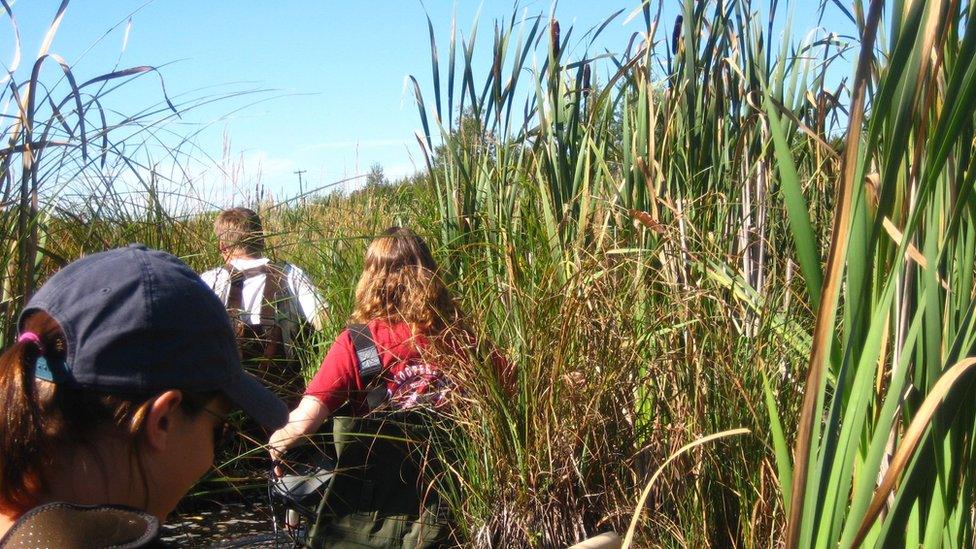New climate 'feedback loop' discovered in freshwater lakes
- Published

Methane emissions from lakes in the northern part of the world could increase significantly
Methane emissions from lakes in the northern hemisphere could almost double over the next 50 years because of a novel "feedback loop" say scientists.
Climate change is boosting the proportion of cattail plants growing in and around freshwater lakes they say.
But when debris from these reed beds falls in the water it triggers a major increase in the amount of methane produced.
The gas is at least 25 times more warming than CO₂ in the atmosphere.
Freshwater lakes play an important but relatively unrecognised role in the global carbon cycle, contributing around 16% of the Earth's natural emissions of methane - compared to just 1% from all the world's oceans.
The gas is produced by microbes in the sediment at the bottom of lakes who consume organic matter that falls into the water from plants and trees that live close to the shore.
The amount of methane generated according to this study, varies considerably depending on what enters the lake.
The research team carried out tests in the laboratory that compared the impact of coniferous and deciduous trees with debris from cattails (often known in the UK as bulrushes).

Cattail plants that fall into lake sediments of lakes are key to increased methane
Incubated in the lab for 150 days the scientists found that cattails produced over 400 times the level of methane compared to conifers. The researchers believe that chemicals in both coniferous and deciduous trees restrict the ability of the microbes to produce the gas.
"The cattails don't have the same chemicals and so they are no longer inhibiting the microbes from producing methane," senior author Dr Andrew Tanentzap, from the University of Cambridge, told BBC News,
"By now comparing what's happening in the reed beds to what's might happening beneath a forest - wow, it's a massive difference!"
The researchers believe they have discovered a new mechanism that has the potential to cause substantially more greenhouse gases to be produced by freshwater lakes. They say the warming climate that promotes the growth of aquatic plants has the potential to trigger a damaging feedback loop in natural ecosystems.
To assess this impact the team looked at species distribution models that predict how plants are going to change their ranges under different climate scenarios.

Researchers say that methane from lakes already makes up 16% of natural emissions
"This forecasts a whole range of these different aquatic plants moving northwards with warmer temperatures into a part of the world that's dominated with lakes so there is going to be more habitat available to them," said Dr Tanentzap.
Their calculations show that the number of northern lakes colonised by cattails could double between 2041 and 2070 and that this could elevate methane production by at least 73% during the growing season.
"It would offset what plants and soils do in terms of buffering the greenhouse effect," Dr Tanentzap added.
Other researchers in the field acknowledged that the new study was a step forward.
"Methane production is currently underestimated in global climate models," said Dr Sapna Sharma, an expert in climate change impacts on lakes from York University, Toronto.
"This study was able to elucidate a mechanism by which lakes may produce even more methane that previously thought. Uncovering another potential source of methane production from boreal lakes is useful to further understanding global carbon cycles and ultimately improve climate projections."
The research has been published, external in the journal Nature Communications.